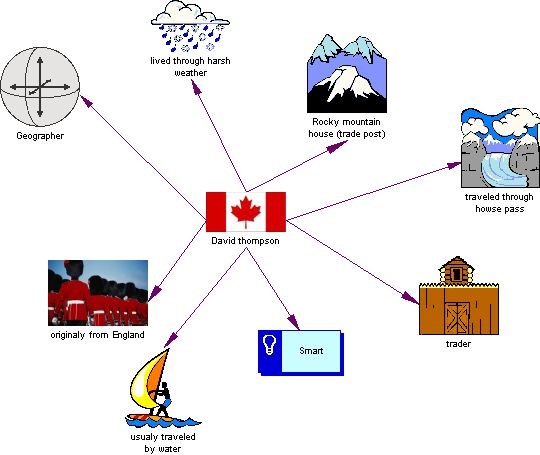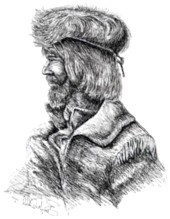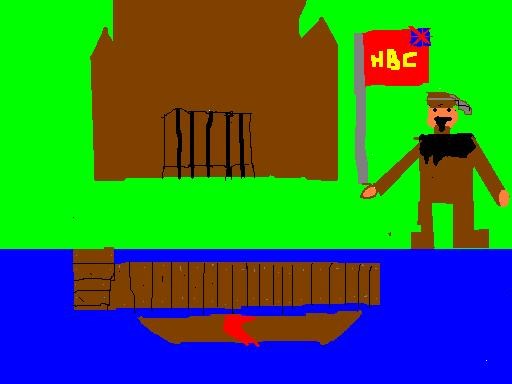 |
| David Thompson Web (I made it.) |
David Thompson was born in London, England 1770. He came to Canada to make a living as a fur trader. Unlike most fur traders David could easily read and write. Many people have called him the greatest land geographer who ever lived and his mapmaking was definitely his best skill. His greatest accomplishment however was a map including most of western Canada, one that many people still base maps on today. It still hangs at Greenville Street in Toronto. That’s not even a quarter of his life. It was full of adventure and hardship and it would take hours to explain it all.
 |
| David Thompson |
Some may ask why do we remember David Thompson? Because he’s the man who mapped Canada. From Ontario to British Columbia and over to Montreal. In his lifetime he had covered almost two million miles, travelling all that way. During spring of 1799 Thompson met and married Charlotte Small and for 57 years she and their 13 children accompanied them on many of Thompson's trips. On one of his voyageur trips Thompson was informed that Colonel Nelson, currently at war, had been killed. When Thompson had heard this he named a mountain honouring him, Mount Nelson. Speaking of military, while the War of 1812 raged on, Thompson joined the militia and designed a sled for carrying heavy artillery. Some time after that two of their children died, Emma and John. Thompson had later on written in one of his 80 journals, “too good for this world.”
How did Thompson learn how to survey anyhow? It was all in the apprenticeship of Philip Turnor. David had broken his leg after falling into a ditch a few days before Christmas, it was when Philip had cared for David that he learned to survey. This was only a few years after Thompson had arrived so he still worked for The Hudson Bay Company. Of course some years later he went to work for the North West Company.
 |
| David Thompson (I made it) |
His first ever-major assignment was to survey the forty-ninth parallel. It was to find out if any Company trading posts were in the U.S. and it turned out they were. After his success Thompson had hundreds of voyageurs at his command. But after the glory days and after life threatening accidents, his maps were unneeded. To keep his family fed and ok he found places for the girls to stay and sent his sons to get jobs. He couldn’t afford to lose more money. He sold his surveying equipment and a lawyer claimed they were furniture. Thompson went blind and had his eyes operated on and doctors revealed he had been blind in the right eye for years, but it was a success and the first time in sixty years he could see with both eyes. But then on February 10, 1857 Thompson died at the age of eighty-six and Charlotte died three months after. That wasn’t the end of David’s legacy though. He lives on with us and is greatly remembered for those who truly care for “the greatest land geographer who ever lived.”
Page created on 3/3/2007 12:00:00 AM
Last edited 3/3/2007 12:00:00 AM
